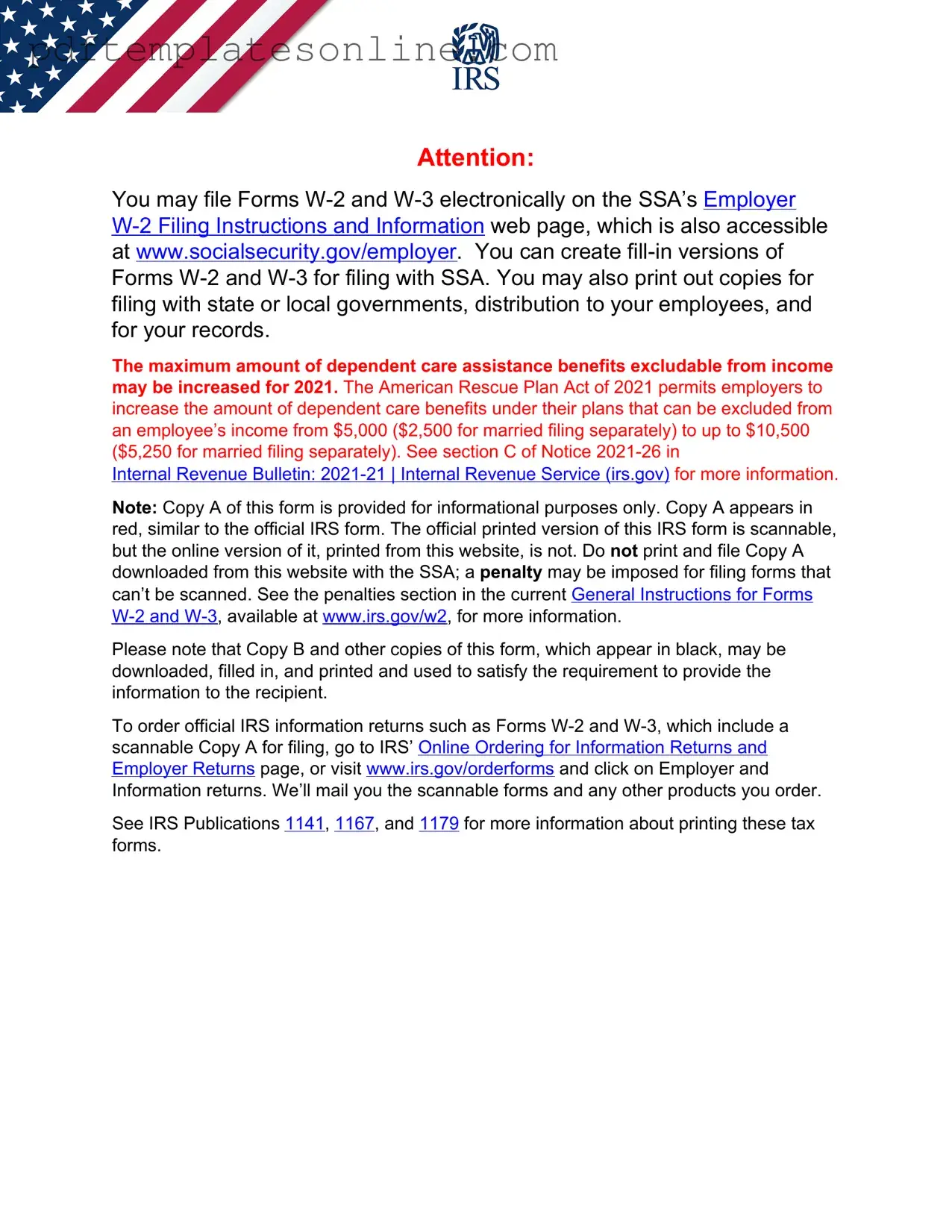Blank IRS W-2 Form
The IRS W-2 form is a document that employers use to report an employee's annual wages and the taxes withheld from their paycheck. This form is essential for employees when filing their income tax returns, as it provides crucial information about earnings and tax contributions. Understanding the W-2 form can help individuals ensure they accurately report their income and claim any eligible tax credits or deductions.
Access IRS W-2 Editor Now
